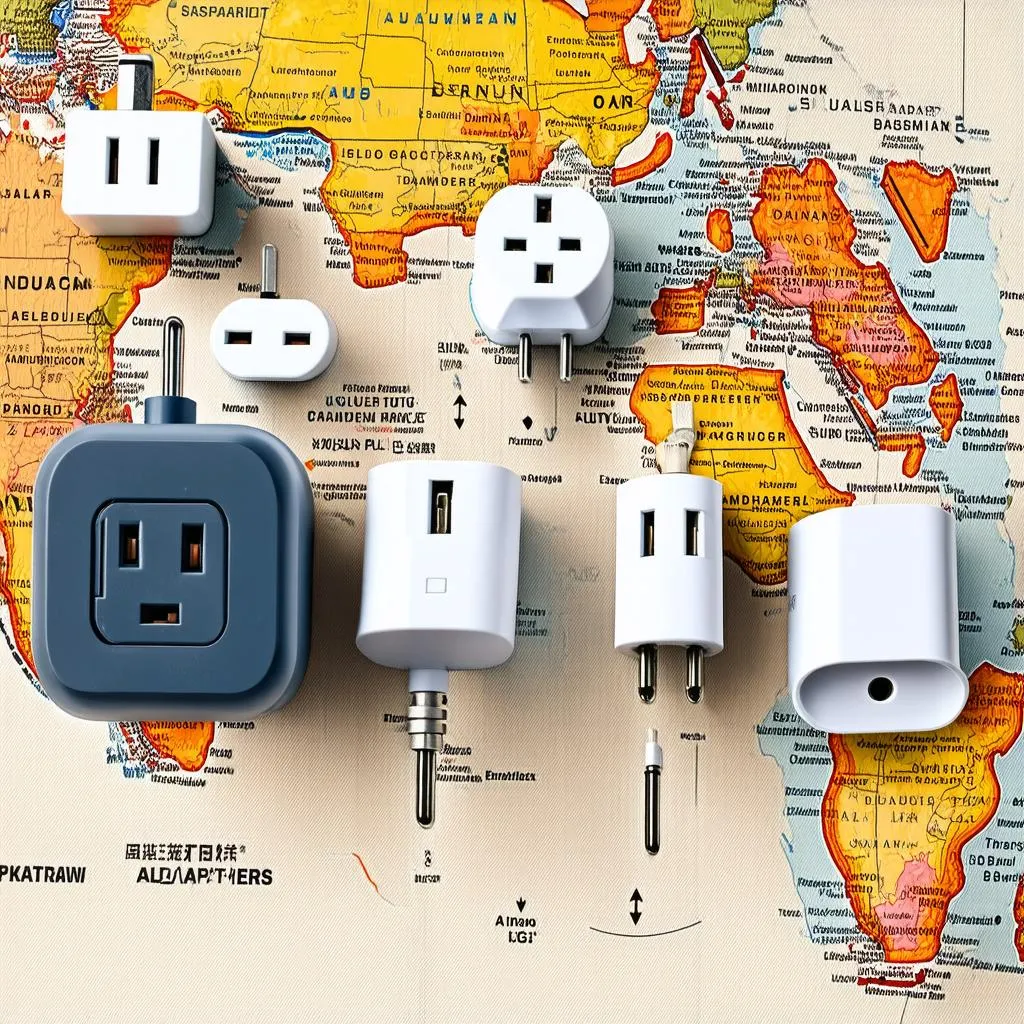Picture this: you’re finally in Paris, the city of lights, ready to capture all the magic with your trusty camera. You reach for your charger, only to realize it won’t fit into the French outlets! Disaster!
Don’t let this travel nightmare become your reality. Understanding the difference between adapters and converters – and knowing which one you need – can be the difference between a smooth, enjoyable trip and a frustrating, tech-free one. Let’s dive in!
Adapters vs. Converters: What’s the Difference?
The confusion is understandable; both devices help you use your electronics abroad, but they serve very different purposes.
Adapters: These are like the peacekeepers between your plug and the foreign outlet. They simply change the shape of your plug to fit. Think of them as the travel version of those bulky three-prong adapters we use for certain appliances back home.
Converters: These are the voltage superheroes! Converters actually change the voltage coming out of the outlet to match what your device needs. This is crucial for appliances that are sensitive to voltage fluctuations.
To simplify:
- Adapter: Changes plug shape, not voltage.
- Converter: Changes voltage, may or may not change plug shape.
When Do You Need an Adapter?
Imagine strolling down the colorful streets of Bangkok, phone in hand, using your trusty navigation app to discover hidden temples. Suddenly, your battery icon flashes red – low battery! An adapter is your best friend in these situations, allowing you to charge your devices wherever you are.
You’ll need an adapter if:
- You’re traveling to a country with different outlet shapes than your home country.
- Your device is dual voltage (check the label on your device or the power brick – it should say something like “100-240V”).
Pro-tip: Invest in a universal adapter! These nifty gadgets come with various plug configurations, making them compatible in almost any country.
When Do You Need a Converter?
Say you’re in Tokyo, finally experiencing the bustling Shibuya Crossing firsthand. You want to style your hair for a fun night out, but your high-powered hairdryer from home needs a converter to function with the Japanese electrical system.
You’ll need a converter if:
- Your device is single voltage (it only accepts the voltage of your home country).
- You’re using high-powered appliances like hairdryers, curling irons, or electric razors.
Important Note: Using a high-powered appliance with only an adapter and no converter can damage your device and even pose a fire hazard.
Planning Your Trip: Essential Tips
Planning a trip, especially to a new country, can be overwhelming. Here’s a handy checklist to ensure a smooth and enjoyable journey:
1. Research Your Destination:
Before you even pack your bags, research the electrical outlets and voltage used in your destination country. Websites like Travelcar.edu.vn offer valuable information on international travel essentials.
2. Check Your Devices:
Look for the voltage information on your electronics and appliances. Make a note of which ones are dual voltage and which require a converter.
3. Pack Smart:
Once you know what you need, purchase your adapters and converters. A universal adapter is a wise investment for frequent travelers.
4. Feng Shui Tip:
Pack your adapters and converters in a red pouch or bag. In Feng Shui, red symbolizes good luck and protection, ensuring a smooth and energized journey.
5. Additional Resources:
For more travel tips and information, visit Travelcar.edu.vn, your one-stop resource for all things travel!
FAQs:
Q: Can I use a converter and adapter together?
A: Yes, you can! In fact, some converters come with built-in adapters.
Q: Where can I buy adapters and converters?
A: You can find them at electronics stores, online retailers, and even at the airport. However, it’s generally cheaper to buy them before you travel.
Q: What happens if I plug my device into the wrong voltage?
A: It can damage or destroy your device. Always double-check the voltage requirements before plugging anything in.
In Conclusion
Navigating the world of adapters and converters doesn’t have to be daunting. With a little planning and the right tools, you can ensure your devices stay charged and ready to capture every unforgettable moment of your trip.
Now that you’re equipped with this knowledge, go explore the world and share your experiences! Don’t forget to tell us about your adventures in the comments below. Safe travels!
 Different types of adapters
Different types of adapters
 Woman working on laptop in a cafe
Woman working on laptop in a cafe